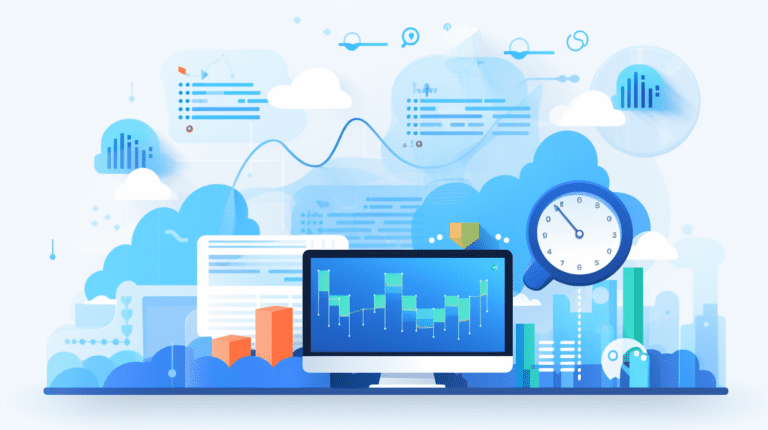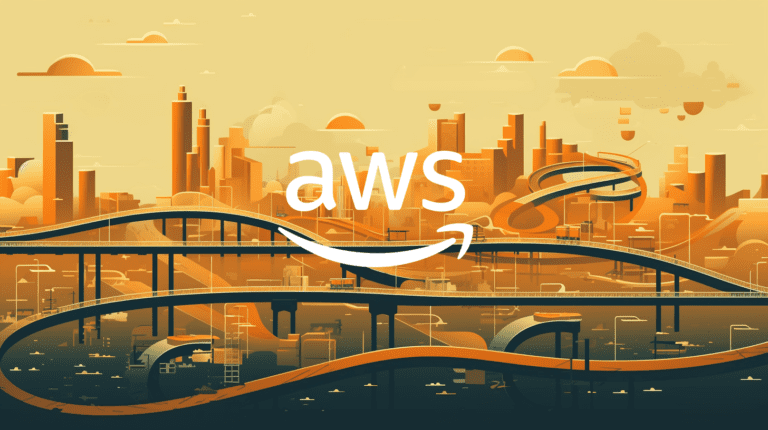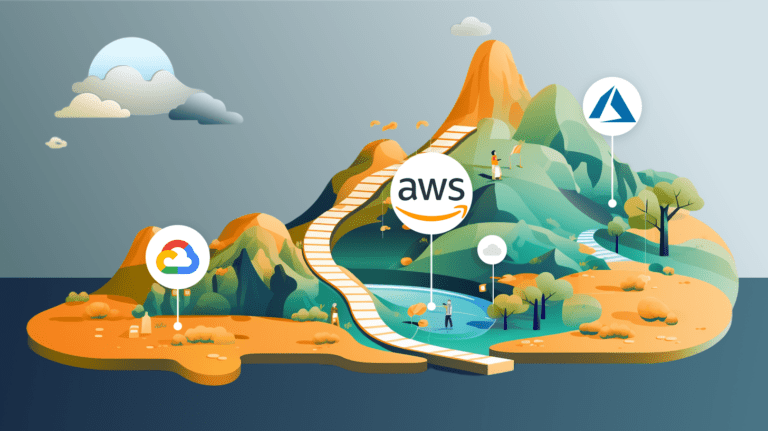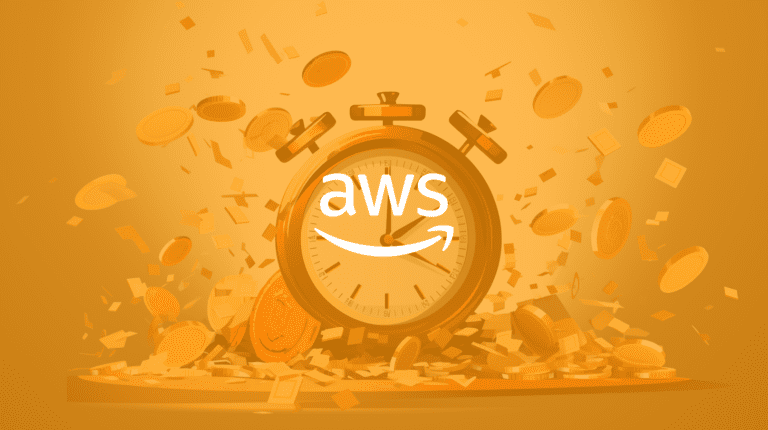Cloud Cost Optimization: Your Guide to Reducing Cloud Infrastructure Bills
Managing cloud costs effectively is more than just a financial imperative; it’s a critical competency for organizations operating in cloud environments. With various cloud services consuming a sizeable portion of IT budgets, it’s crucial to have a comprehensive cloud cost optimization strategy in place. This guide outlines actionable strategies to save significant costs without sacrificing performance or reliability.
Understand Your Cloud Costs

The foundation of cloud cost optimization lies in understanding where and how your money is spent.
Review Billing Accounts
Begin with a high-level review of your cloud bills. AWS, Azure, and Google Cloud Platform offer detailed invoices that break down costs by individual services, data transfer fees, and other associated costs. Use your cloud provider’s cost management console to explore your billing data further and identify any unexpected cost spikes.
Per-Account Analysis
Next, break down your overall cloud costs at the account level, diving into each business unit, project, or application. This analysis will give you insights into your significant spending areas, enabling you to focus your cloud cost optimization efforts where they will make the most impact.
Tagging for Visibility
Implementing a resource tagging strategy can be a game-changer for managing cloud costs. Start with three primary dimensions:
- Ownership: Knowing who owns a resource—whether it’s a department, team, or specific cost centers—provides accountability.
- Application: What is the resource contributing to? Is it an essential application/service or a side project? Knowing this helps prioritize optimization efforts and find unused resources.
- Criticality: Is the resource part of a mission-critical cloud environment, or is it part of a development or staging environment? Understanding this helps in making informed optimization decisions.
Infracost’s Tagging Policies can be used to establish this initial tagging strategy and quickly increase tagging coverage over a few weeks.
Data-Driven Culture
It’s crucial to bring cloud cost awareness into the cultural fabric of the engineering and product teams. Use tools like Infracost’s CI/CD integrations to estimate cloud spend and detect cost anomalies in the software development lifecycle. For project and product managers, Jira integration helps bring cost data into project management workflows so they understand the impact of Jira issues and epics on cloud costs.
Cloud Usage Optimizations

Optimizing how your resources are used is essential to control cloud costs effectively.
Delete Idle Resources
Idle resources are a common source of cloud waste. Regularly reviewing your resource utilization can reveal unused or underutilized resources, which should either be terminated or archived.
Rightsizing Resources
Compute instances, storage, and databases are often over-provisioned. Utilizing cloud cost optimization tools can provide recommendations for rightsizing these resources without compromising performance.
Infrastructure Best Practices
Several simple infrastructure changes can optimize cloud costs. These best practices are part of cloud providers’ Well-Architected Frameworks:
- Instance Upgrades: Cloud providers frequently update their instance types. Migrating to a newer instance type can provide better performance at a lower cost.
- Storage Upgrades: Similar to compute instances, storage services also get updated. For example, switching from AWS’s gp2 to gp3 and Azure SSD v1 to v2 disks can reduce cloud costs.
- AWS Graviton: If you’re using AWS, consider switching to Graviton-based instances for specific workloads to save money without sacrificing performance.
- Lifecycle Policies: Implementing object storage and logging lifecycle policies can prevent cloud storage costs from ballooning over time.
Use tools like Infracost’s FinOps Policies to check for the above cost optimization best practices across cloud vendors directly in the software development lifecycle workflow. This provides engineers with a fast feedback loop so they can optimize cloud costs from the outset vs fixing issues post-deployment.
Efficient Use of Reserved Instances and Savings Plans
If you have purchased Reserved Instances (RIs) or Savings Plans, ensure you use compatible resources. Failure to do so can result in paying for RIs in addition to on-demand instances, doubling your costs. Cloud vendors provide utilization reports that show how well RIs and Savings Plans are being used; monitor those to optimize costs.
Spot Instances and Preemptible Instances
For workloads that are not mission-critical, consider using spot instances on AWS or Azure or preemptible instances on Google Cloud. These instances are significantly cheaper but can be terminated by the cloud provider at any time.
Automated Scheduling
Consider implementing automated scheduling solutions to stop non-essential resources during off-hours, like nights and weekends. Some cloud cost management tools provide automated scheduling of compute cloud services, which can reduce costs significantly as that lowers the total running time of resources.
Code-Level Optimizations
Sometimes, the cloud costs need to be optimized at the code level. Batch API calls, data caching, and reducing memory or CPU usage can significantly reduce the required computing resources, thus optimizing cloud costs.
Architectural Changes
At times, a shift in architecture could result in significant cost savings. For instance, migrating a VM-based application to a serverless architecture could reduce computing and operational costs.
Cloud Rate Optimizations
Utilize Savings Plans and RIs
Committing to a Savings Plan or purchasing Reserved Instances (RIs) can lock in reduced rates, sometimes offering discounts of up to 60% compared to on-demand pricing. This is often the most significant way to reduce your cloud bill.
Negotiate Enterprise Discounts
Larger organizations with significant cloud spend have the leverage to negotiate enterprise-level discounts. Programs like AWS’s Enterprise Discount Program (EDP), Azure’s Monetary Commitments (part of Enterprise Agreements), and Google’s Commitment Agreement are designed for this. These discounts usually start with a few percentages and go upwards depending on the commitments to the cloud providers.
Monitoring and Alerting

Budget Alerts
Utilize budget alerts to get notified when you exceed expected spending thresholds. This approach allows for immediate action, reducing the likelihood of cost overruns across your cloud services.
Guardrails for Anomaly Detection
Tools like Infracost’s Guardrails feature help detect anomalies in cloud spending, flagging these to engineers before cloud bills spiral out of control.
Final Thoughts
Cloud cost optimization is an ongoing activity that requires regular monitoring, review, and adjustments. You can exercise greater control over using a combination of usage and rate optimization strategies across your cloud services. Always be vigilant, measure frequently, and adjust as necessary to keep your cloud spending in check. With the correct set of tools and practices, cloud cost optimization can be a continuous cycle of improvement rather than a financial challenge.
Frequently Asked Questions (FAQs)
What is cloud cost optimization?
Cloud cost optimization reduces your overall cloud bill by identifying mismanaged resources, eliminating waste, and rightsizing cloud resources to the required scale.
What are the key areas to focus on for cloud cost optimization?
The primary areas to focus on include understanding your cloud bills, usage optimization, rate optimization, and continuous monitoring and alerting.
How important is tagging for cloud cost optimization?
Tagging is crucial for cost allocation, optimizing cloud resources, and maintaining an effective cloud cost management strategy. It allows you to track your cloud resources by different metrics such as ownership, application/service, and criticality, making optimizing cloud costs easier.
What is rightsizing?
Rightsizing involves adapting the capacity of your cloud resources to match the workloads they handle. Analyzing application performance often reveals cost-saving opportunities across your cloud environment, and you can downgrade the size of over-provisioned cloud resources or terminate unused ones. Rightsizing should be an important component of your cloud cost optimization strategy.
What are Reserved Instances and Savings Plans?
Reserved Instances (RIs) and Savings Plans are billing options that offer you a discount compared to on-demand costs in exchange for committing to a specific usage level for a set period, often 1-3 years.
How can engineering teams help in cloud cost optimization?
Engineering teams play a critical role in optimizing resource usage. From code-level adjustments to architectural decisions, engineers can identify and implement several optimization strategies to reduce costs in your cloud environment, ensuring you get the maximum business value out of the cloud.
What are cloud cost optimization tools?
These are specialized software designed to help you monitor, manage, and reduce your cloud costs. They can also be called cloud cost management tools. Tools like Infracost can be used to check for required tags and cost optimization best practices, as well as putting cost data in the engineering workflow.
What are the risks associated with cloud cost optimization?
While you optimize costs, ensure that cost-cutting measures do not lead to performance degradation or reduced availability that can impact business value. You can always test changes extensively across cloud providers before implementing them in production environments.
How often should I review my cloud spending?
Cloud cost optimization is an ongoing process. Monthly reviews are often required, but setting up real-time alerts and daily or weekly reports can help you quickly identify issues in your cloud bill to cost anomalies.
How can I avoid unexpected costs?
Effective monitoring, alerting, and forecasting can safeguard against unexpected costs. Implement guardrails to flag anomalies and use cloud budget alerts to get notified when spending thresholds are exceeded.







